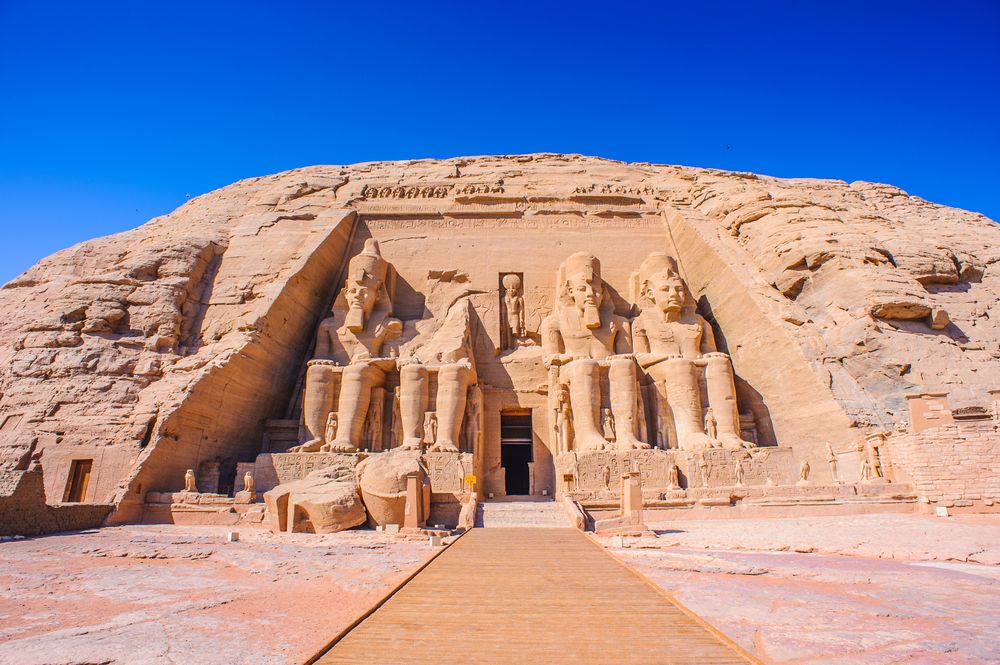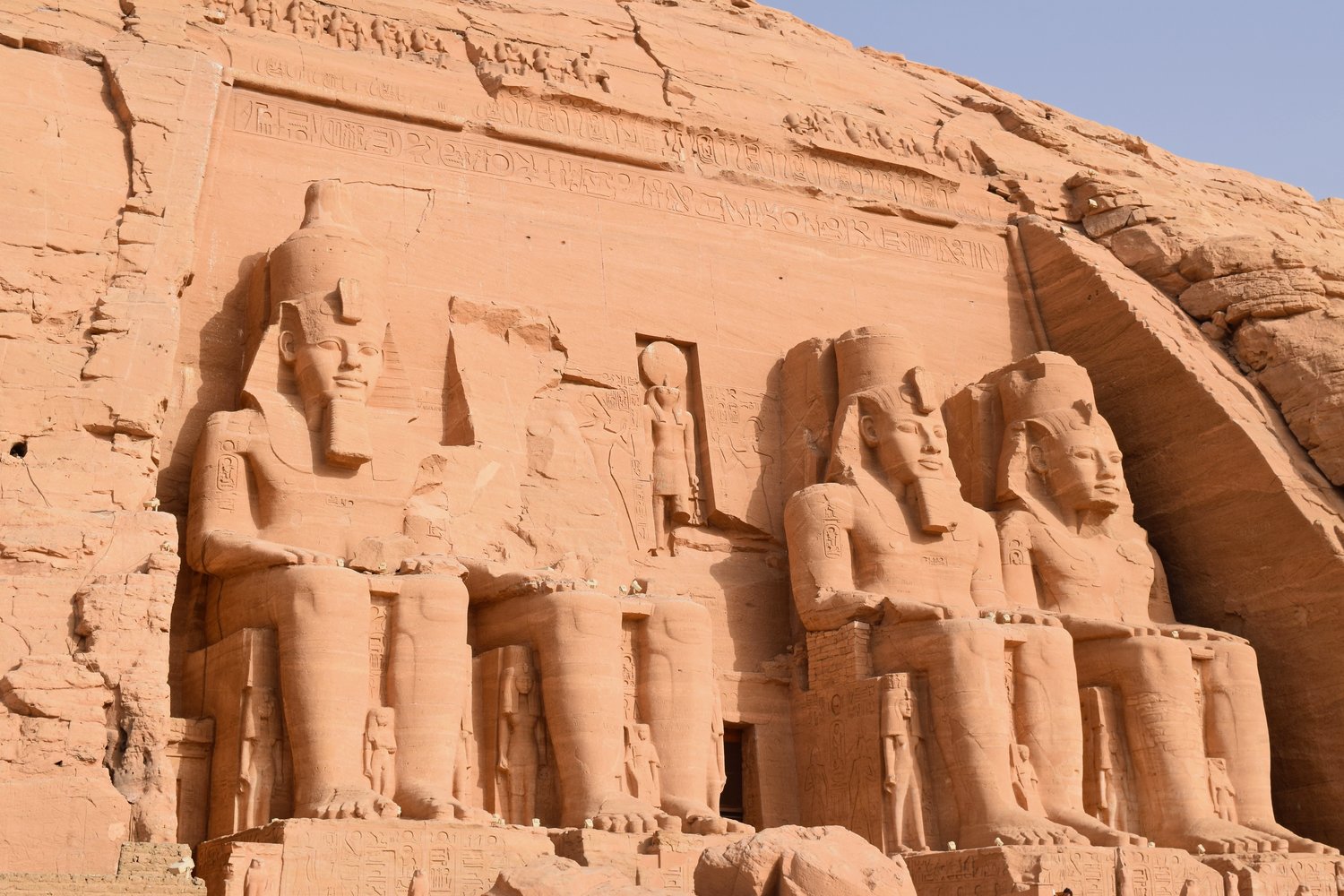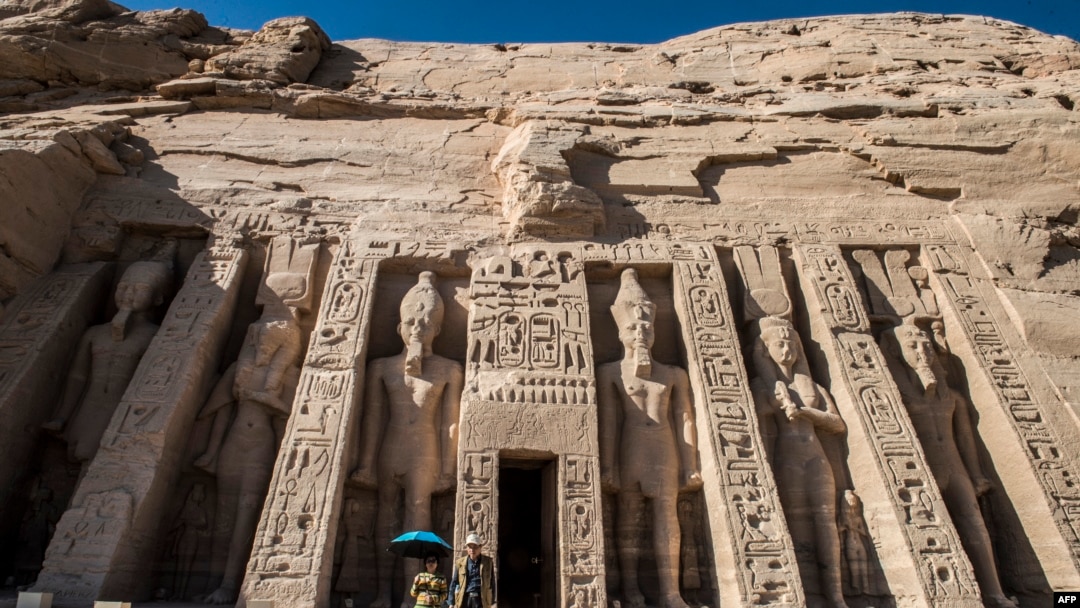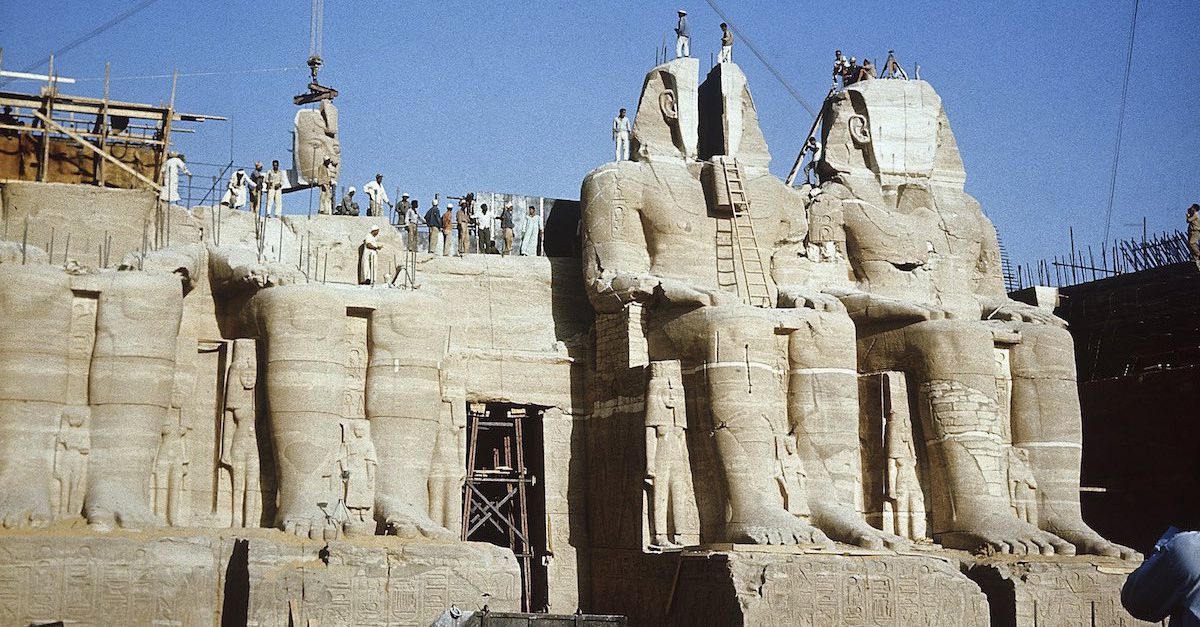The Untold Story of Abu Simbel Temple: How It Was Saved from the Nile
Deep in the Nubian desert, the magnificent Abu Simbel temples are remnants of ancient Egyptian history, with engraved murals, statues, and hieroglyphs carved into the rock walls. But in the 1960s, the temples faced a grave threat as the Nile River rose due to the construction of the High Dam at Aswan. The looming danger forced a rescue effort to preserve the temples, and what followed was a remarkable feat of engineering and cooperation from all over the world. This article reveals the untold story of how the Abu Simbel Temple was saved from the Nile and how this massive undertaking has propelled it to become a world-renowned heritage site.

A brief overview of the Abu Simbel Temple Complex
The Abu Simbel Temple complex is an iconic historical site in the southern region of Egypt. It consists of two temples, the Great Temple of Ramses II and the smaller Temple of Hathor and Nefertari. The complex was built during the 13th century BC and is known for its colossal statues, intricate carvings, and well-preserved structural elements.
As described by Britannica, the Great Temple of Ramses II "has four 20-meter statues of the pharaoh sitting on his throne, while the facade is adorned with smaller statues, bas-reliefs, and hieroglyphic inscriptions celebrating the king’s military victories." On the other hand, the Temple of Hathor and Nefertari have statues of these queens and various other depictions.
Despite its grandeur, both temples were at risk of being submerged by the Nile River due to the construction of the Aswan High Dam in the 1960s. The temples were salvaged through a colossal engineering feat and relocated to higher ground with the help of international efforts and funding from over 50 countries.
This relocation project was necessary to preserve the cultural heritage of Egypt and avoid losses of historically significant sites. Today, visitors can enjoy the awe-inspiring beauty of the Abu Simbel Temple complex and marvel at the remarkable engineering and preservation efforts that have saved it from being lost to the Nile. [1][2]

The threat of flooding due to the construction of the Aswan High Dam
The construction of the Aswan High Dam in the 1960s posed a serious threat to the Abu Simbel Temple complex. The temple complex was located on the west bank of the Nile River, but with the dam's construction, the Nile's waters would rise and eventually flood the temples. This was not the first time the temple complex had faced the threat of flooding—over the centuries, the Nile had risen and fallen, and the temples had been damaged and restored numerous times. However, the new dam posed a bigger threat than the temples had faced before. The waters of Lake Nasser, formed by the dam, would eventually inundate the temples, putting them at risk of permanent destruction.
The temple threat was not just a matter of historic preservation but also of cultural significance. The temples were not just ancient relics but were still actively used for religious ceremonies by the local Nubian populations. In addition, the temples were seen as a symbol of Egyptian civilization and history, and their loss would have been a great blow to the nation's identity.
As UNESCO noted in its appeal to save the temples, "The temples of Abu Simbel represent a masterpiece of ancient architecture and engineering, and a source of great cultural pride to the people of Egypt, Africa, and the world." The international effort to save the temple complex involved 50 countries, each contributing expertise and resources to the project. Despite the challenges in relocating the temples, including the need to move the colossal statues and other architectural features, the project ultimately successfully preserved this important piece of Egypt's cultural heritage. [3][4]

Importance of preserving cultural heritage sites
Preserving cultural heritage sites is crucial to maintaining our connection to the past and helping future generations understand the complex histories of their cultures and societies. Cultural heritage sites, such as the Abu Simbel Temple complex, can provide insight into ancient societies' religious beliefs, political systems, and art. The importance of these sites goes beyond their historical value; they also represent a sense of cultural identity and a shared history that can bring communities together.
As UNESCO's Director-General Vittorino Veronese once said, "To safeguard the cultural heritage is an obligation common to all humanity." The campaign to save Abu Simbel Temples is a perfect example of how international cooperation can save invaluable cultural heritage sites. The international rescue operation involved tens of thousands of workers from over 50 countries, which was made possible by the determination to preserve history and cultural identity.
However, preserving cultural heritage sites can also present significant challenges. Some sites are in danger due to neglect, natural disasters, or political conflict. Even with international support, ensuring that these sites receive adequate funding, resources, and protection from destruction can be difficult.
Our responsibility is to ensure that cultural heritage sites are protected and preserved for future generations. As individuals, we can do our part by visiting cultural heritage sites, learning about their histories, and supporting efforts to preserve them. As a global community, we can continue to advocate for the protection of these sites, provide funding and resources, and develop innovative solutions to the challenges facing cultural heritage preservation. In doing so, we can continue to learn and appreciate the histories and identities of the many cultures that make up our world. [5][6]

History of the Abu Simbel Temple
The Abu Simbel Temple is an ancient cultural heritage site in southern Egypt, originally constructed between 1264 and 1244 BCE during the reign of Pharaoh Ramesses II. The temple is famous for its monumental statues of Ramesses II, which stand at a towering height of 66 feet and weigh over 1,000 tons each. The temple was a significant religious centre during the New Kingdom period, dedicated to worshipping the sun gods Amun-Re, Re-Horakhty, and Ptah.
In the mid-20th century, the Aswan High Dam's construction on the Nile severely threatened the Abu Simbel Temple and other historic sites in the area. The rising waters of the Nile would submerge the temple complex, destroying it for future generations. UNESCO launched an international campaign to save the site, and a complex engineering feat was undertaken to relocate the temples to higher ground.
"Between 1963 and 1968, a workforce and an international team of engineers and scientists, supported by funds from more than 50 countries, dug away the top of the cliff and completely disassembled both temples, reconstructing them on the high ground more than 200 feet above their previous site. In all, some 16,000 blocks were moved," as stated by Encyclopaedia Britannica.
The relocation of the Abu Simbel Temple complex is a historic achievement that showcases the importance of preserving cultural heritage sites for future generations. The temple still stands today as a testament to the ingenuity of human engineering and the enduring legacy of ancient Egyptian culture. [7][8]

Construction of the Aswan High Dam
The construction of the Aswan High Dam brought civilization and development to Egypt but also posed a huge threat to the invaluable cultural heritage of the country. The Aswan High Dam project started in 1952 and was completed in 1970, providing Egypt with hydroelectricity and water for irrigation. However, the dam's construction also posed a high risk to the ancient landmarks, including the Abu Simbel Temples.
"By building the dam, the government was saving the lives of millions of Egyptians who used to be flooded every year during the inundation of the Nile," said Dr. Zahi Hawass, the former Egyptian Minister of Antiquities. "But, as an Egyptologist, I knew the danger we were facing with the temples of Abu Simbel."
The dam's construction meant that the temples would be submerged by the rising waters of the Nile, along with other historic sites. This sparked a worldwide campaign, led by UNESCO to save the temples from destruction. The plan was to relocate the temples to an area above the reach of the water and recreate them exactly as they were. This was no small feat; the project involved more than 50 countries and cost millions of dollars.
"There were many challenges, including how to dismantle the temples and protect them during transportation," said Hawass. "But, with an exceptional team of experts and engineers, we were able to relocate the temples with exact precision and maintain their historical significance."
The relocation of the temples involved cutting them into individual pieces and transporting them to their new location, where they were reassembled like a giant puzzle. Lake Nasser, the reservoir created by the dam, meant that the original site of the temples was submerged. Still, the temples were saved and continue to stand as magnificent examples of ancient Egyptian architecture and culture.
The Aswan High Dam project provided Egypt with enormous benefits but also presented a significant challenge to preserving the country's cultural heritage. The successful relocation of the Abu Simbel Temples stands as a testament to the power of international cooperation and the importance of preserving cultural sites for generations to come. [9][10]

UNESCO's appeal to save the temples
In 1959, the Abu Simbel Temple faced the threat of destruction due to the construction of the Aswan High Dam. The rising reservoir lake caused by the dam would submerge the temple and erode its foundations, making it imperative to preserve the site. Egypt and Sudan approached UNESCO for help, leading to the organization launching an International Campaign to Save the Monuments of Nubia in 1960. UNESCO’s Director-General Vittorino Veronese emphasized the universal value of the monuments, and the French Minister of Culture André Malraux referred to the project as a “Tennessee Valley Authority of archaeology”.
The project involved experts from various fields, such as hydrologists, engineers, archaeologists, and architects worldwide. The plan devised was radical – dismantling the temples and relocating them to higher ground, reassembling them piece by piece. UNESCO Members States formed national committees to support the operation, with some 30 countries contributing to the project and donating half of the US$80 million total cost.
UNESCO successfully rescued 22 monuments and complexes in total, including the Abu Simbel and Philae temples. The epic engineering feat set a new standard for reconciling modern development and heritage protection. It remains a testament to the importance of preserving cultural heritage sites and the power of international solidarity. “The Abu Simbel temples are a unique testimony to human achievements in a remote period, and, by their very existence, serve as a historical reminder of man's common origins and goals,” commented UNESCO’s Director-General Amadou-Mahtar M'Bow. [11][12]

Description of the project to relocate the temples
The Abu Simbel Relocation Project was a one-of-a-kind architectural and engineering challenge that involved some of the world's leading construction firms teaming up to rescue a pair of ancient temples threatened by the Nile and was a winning bet by the engineering community that believed in the project from the start. The project was a rare example of international collaboration due to a worldwide call for help launched by UNESCO three months after construction began on the Aswan High Dam on January 9, 1960. The challenge was immense, as each temple had to be removed, moved, and put back together on a nearby artificial hill paved with the original stones. The basic idea was to move them to a place where water could not damage them.
A European consortium of construction companies presented the project, and they were tasked with building the artificial hill, breaking up the temples into more than 1,000 blocks, and carrying out the reconstruction. The entire rescue operation took place in three phases. The first phase lasted from the spring of 1964 to the spring of 1965, during which the partners built a dam to protect the temples from the reservoir's rising waters. The second phase involved dismantling the temples while sand cushions protected their facades, preventing fragments from falling and causing damage. The interior of the temples was bolstered by steel scaffolding. The third and final phase involved rebuilding, during which surveyors went to work to guarantee that the blocks were placed in their original location. "The Abu Simbel Relocation Project was the most ambitious and complicated work in human history," says engineer Piero Portaluppi.
The project was not without its challenges, as cut sections of the temples had to be transported to a depository and treated constantly with doses of synthetic resin to prevent them from ruining. Additionally, blocks from the ceiling or facade of the temple had specific weight and size limits that had to be adhered to. However, the project proved to be a success, and the temples of Ramses II at Abu Simbel were saved from the rising Nile waters of the Aswan High Dam. Though the temples' original site was submerged by Lake Nasser's creation, the temples still stand tall today as a testament to the importance of preserving cultural heritage sites. [13][14]

An international effort involving 50 countries
The relocation of the Abu Simbel Temple complex was not just an Egyptian project but an international effort that involved over 50 countries. UNESCO launched an appeal in 1960 to save the temples, and various solutions were considered before a Swedish-Egyptian proposal was picked. Ancient Origins said, "jacks, cranes, and powerful winches hoisted the enormous stone weights to the top of the cliff." The two Abu Simbel temples were cut into 1,035 blocks weighing between 20 and 30 tonnes each, and the four colossal statues of seated Ramses II and six more of him standing were sawn into pieces. After the blocks were rebuilt on higher ground, artificial hills were created as a protective barrier against the river. This arduous project took eight years to complete and involved about 1,000 specialist construction technicians working through a $36 million budget. In 1968, UNESCO's director general Rene Maheu said, "It was the first time that we had seen international cooperation in action on such a scale in the sphere of culture. It was an unparalleled undertaking in which over 50 countries... have combined their efforts to save the artistic and historical treasures of the temples of Abu Simbel."
The effort to save the Abu Simbel Temple complex highlights the importance of preserving cultural heritage sites. These endeavours benefit not only the country where the sites are located but also the international community, as tourists worldwide travel to see these historical and artistic wonders. Through international collaboration and funding, these sites can be protected and preserved for future generations to appreciate. As UNESCO's slogan states, "Heritage is our legacy from the past, what we live with today, and what we pass on to future generations." [15][16]

Challenges faced during the relocation process
Moving the colossal ancient temples of Abu Simbel was no easy feat. The project was certainly ambitious and came with its fair share of challenges. One of the first hurdles the team had to overcome was the isolation of the construction site. As it was located in a remote area with limited transportation options, everything had to be brought in by plane, truck, or ship. This made the equipment and crew transportation particularly difficult and expensive.
Additionally, removing the temples block by block required tremendous care to ensure that every piece was reassembled correctly. According to UNESCO, "Each block was numbered and cut so that it could be reassembled in the same position it had occupied before." This painstaking work required the expertise of engineers and artists alike.
Moreover, the relocation suffered several setbacks and delays. At one point, a barge carrying a crucial piece of equipment sank en route to the temple. Furthermore, political unrest in Egypt led to a two-year hiatus in the project. Finally, on September 22, 1968, the operation was completed successfully.
Moving the Abu Simbel temples was an incredible undertaking that required collaboration from many countries and the dedication of skilled workers. As Abu Simbel engineer Ivan Hrbek put it, "It was quite a challenging project, both on a technical and human level." But thanks to their hard work, the world can now enjoy these incredible architectural wonders. [17][18]

Creation of Lake Nasser and the original site being submerged
One of the most significant consequences of the Aswan High Dam's construction was Lake Nasser's creation. This massive artificial water reservoir spans across Egypt and Sudan. The building of the dam was necessary for generating electricity, increasing cultivable land, and reducing flooding in the region. However, this project also posed a grave threat to the Abu Simbel Temple complex as it risked being submerged under the newly formed Lake Nasser. This was a great concern for the global community as the site held immense historical and cultural significance that needed to be preserved.
In response, UNESCO launched an appeal to save the temples, which received an overwhelming international response involving 50 countries. The epic engineering rescue mission catapulted Abu Simbel to the forefront of world heritage protection. To save the temples from flooding, the entire site had to be relocated block by dusty block and rebuilt on higher ground.
The original site of Abu Simbel was completely submerged by the creation of Lake Nasser, which was a deeply emotional experience for many. UNESCO director general Rene Maheu described the rescue project as an “unparalleled undertaking in which over fifty countries... have combined their efforts to save the artistic and historical treasures of the temples of Abu Simbel.” Even today, how the Abu Simbel temples were rescued from the rising waters of the Nile remains a shining example of international cooperation to preserve our shared cultural heritage. As the world continues to grapple with issues surrounding preserving its most valuable cultural sites, the Abu Simbel rescue offers a powerful example of what can be achieved when the global community comes together to safeguard our common heritage. [19][20]
